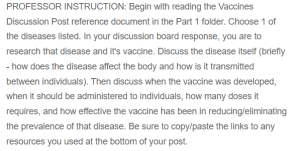Understanding Measles, Mumps, Rubella (MMR Combined Vaccine) and Its Impact, Development, and Effectiveness
The measles vaccines are approved by the Food and Drug Administration and are indicated for routine vaccination of children and adolescents (Measles, mumps, and rubella (MMR) vaccination 2021). The vaccine is life-attenuated and prevents the occurrence of three diseases. This vaccine is designed to prevent infectious conditions such as Measles, Mumps, and Rubella. MMR has high efficacy, and for this reason, it requires a maximum of two doses. It is recommended for a specific population post-exposure prophylaxis. However, susceptible patients, such as healthcare workers and military personnel, should receive the measles-mumps-rubella vaccine to safeguard against potential infections. Vaccination for women before and during the reproductive years is vital to prevent congenital malformations caused by rubella. Mostly, non-immunized women who wish to become pregnant are recommended to receive the vaccination one month before conception. The vaccine is contraindicated for pregnant women. However, during outbreaks, the benefits of receiving the vaccines outweigh the risks, and this justifies the need to administer the vaccine (Bailey et al., 2024).
The effectiveness of the vaccine is estimated at 99% in measles, 95% in mumps, and 90% in rubella after the second vaccination. The first dose should be administered at the age of 12 to 15 months, and the second dose should be administered between ages 4 and 6 years. The interval between the two vaccines should not be less than 28 days. If a patient has a laboratory confirmatory test of measles, mumps, or rubella, they are considered immune to these diseases, and vaccination is considered insignificant. However, in practice, 2 doses of MMR are still given in this situation. As supported by Bailey et al. (2024), some key precautions to observe during vaccination include specialized groups of people, such as hepatic impairment, renal impairment, breastfeeding considerations, pediatric patients, older patients, and post-exposure prophylaxis for patients with increased risk.
References
Bailey, A., Patel, P., & Sapra, A. (2024, February 21). MMR vaccine. StatPearls – NCBI Bookshelf. https://www.ncbi.nlm.nih.gov/books/NBK554450/
Centers for Disease Control and Prevention. (2021, January 26). Measles, mumps, and rubella (MMR) vaccination. Centers for Disease Control and Prevention. https://www.cdc.gov/vaccines/vpd/mmr/public/index.html
ORDER A PLAGIARISM-FREE PAPER HERE
We’ll write everything from scratch
Question
DISCUSSION BOARD #3 VACCINES:
PROFESSOR INSTRUCTION: Begin with reading the Vaccines Discussion Post reference document in the Part 1 folder. Choose 1 of the diseases listed. In your discussion board response, you are to research that disease and it’s vaccine.

Understanding Measles, Mumps, Rubella (MMR Combined Vaccine) and Its Impact, Development, and Effectiveness
Discuss the disease itself (briefly – how does the disease affect the body and how is it transmitted between individuals). Then discuss when the vaccine was developed, when it should be administered to individuals, how many doses it requires, and how effective the vaccine has been in reducing/eliminating the prevalence of that disease. Be sure to copy/paste the links to any resources you used at the bottom of your post.

